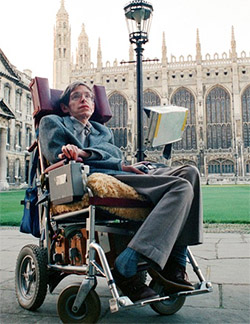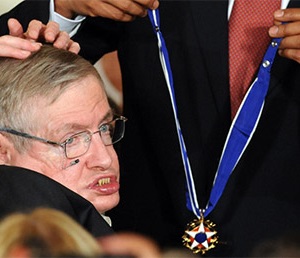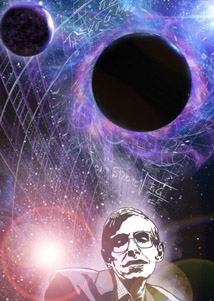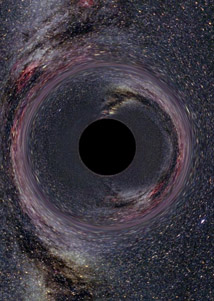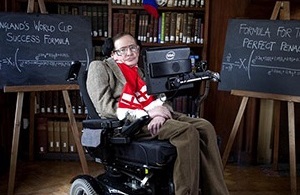Family life
Born in Oxford, Stephen Hawking was the eldest of four children born to Frank and Isobel Hawking, both graduates of Oxford University in medicine and Philosophy, Politics and Economics respectively. The family later moved to St. Albans in Hertfordshire. From an early age, Hawking showed a passion for science and cosmology and was considered a bright, though a not an exceptional student, preferring to spend time on leisure activities.
Frank wanted Stephen to study medicine at University College, Oxford, where he had got his own degree, seeing no career for Stephen in mathematics, his preferred choice. In 1959, at the age of 17, Hawking won a scholarship to study physics and chemistry at University College, since University College did not offer mathematics as an option at the time. He was considered a popular, witty, daredevil character who was keen on classical music, science fiction and was cox of the college rowing crew.
Hawking first met Jane Wilde in St Albans; she was a friend to his sister. Soon after Hawking was diagnosed with motor neurone disease (MND) and though both Hawking and his father advised her to leave, the couple were married in 1965 and went on to have three children, the youngest adopted. It was only after the wedding that it became clear that Hawking’s disease would not kill him within two years as initially suspected.
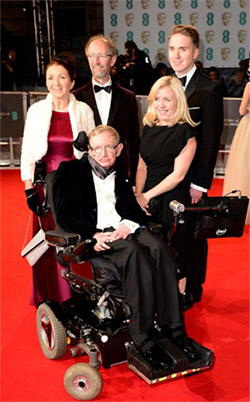
Caring for her children and husband put huge pressure on Jane, particularly with Hawking travelling so much for work, including a year at the California Institute of Technology (Caltech) in 1974. In 1977, Jane met Jonathan Hellyer Jones at a choir she had joined. They developed romantic feelings for each other but were determined that the Hawking family would not be broken up. Jane is reported to have said that Hawking accepted the situation.
In 1985, Hawking had to have a tracheotomy to save his life after contracting pneumonia, but it cost him his voice. One of his first achievements after losing his voice was to draft A Brief History of Time for the general public. Published in 1988, the book sold around 10 million copies globally, introducing the concept of a universe made of strings, black holes, extra-dimensions and time travel. He became a household name, with his work made into a biographical movie, a television series and a number of other books for non-academics.
In February 1990 Hawking told his wife that he was leaving her to live with Mason, one of his nurses who had been caring for him since his tracheotomy, whom he married after his divorce from Jane in 1995. He and Mason divorced in 2006.
Hawking died in 2018, on the same date that Albert Einstein was born, 14 March.
